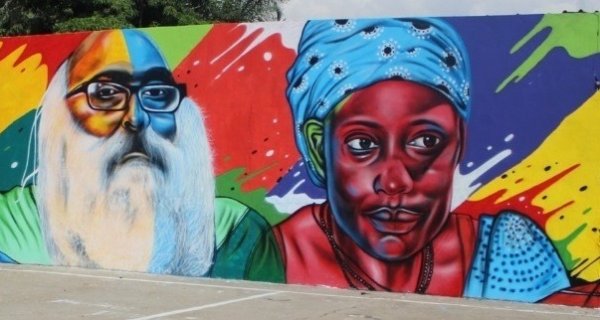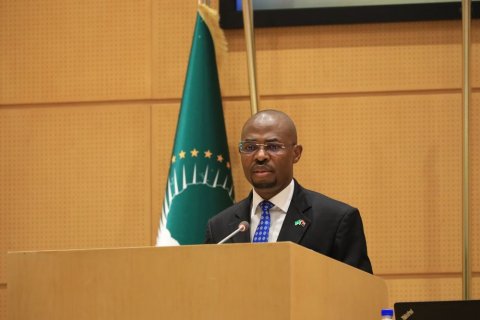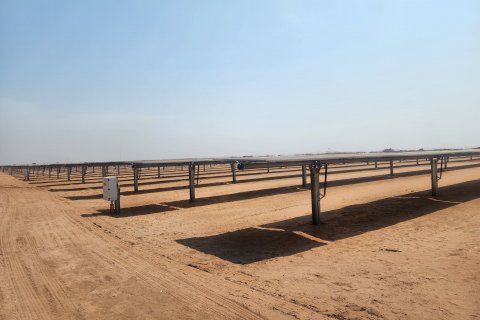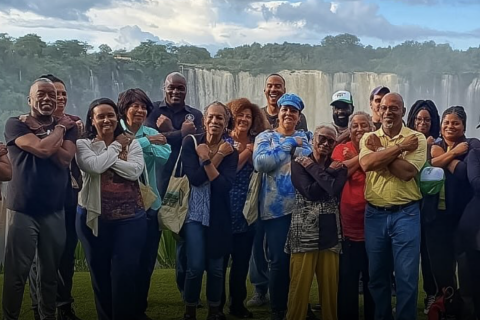The "Mural of Citizenship", which has existed for over 10 years, is located in the Petrangol district, next to a leafy and huge tree known as "Mulemba Waxa Ngola", and in a kind of open-air exhibition the faces of seven figures are portrayed: Angolan priest Pio Wakussanga, winner of the "Human Rights Defender 2018" Southern Africa award; activist Cesaltina Cutaia; the late Carbono Casimiro activist; José Patrocínio, founder of the non-governmental organization (NGO) Omunga; Mamã Gertrudes, child rights defender; journalist and activist Rafael Marques and the activist Inocêncio de Matos, killed in the November 11, 2020 demonstration.
The site, an old parking lot, is used by young people for sports and leisure activities and the faces of these Angolan civil society personalities jump in sight on the wall around.
According to activists, heard this Monday by Lusa at the site, less than a week ago that the wall had been vandalized, allegedly under the guidance of the administrative authorities of the municipality, which generated outrage.
A group of young people demonstrated last Friday in front of the municipal administration of Cazenga in protest against the "vandalization of space" since, according to reports, the paintings on display there would have been "blurred with burnt car oil.
At least 11 demonstrators were arrested by the police, following the protest, accused of vandalism and riot, and are present this Monday in court for summary trial.
For activist Fernando Sakuaiela, who laments the "desecration" of that space, the "Mural of Citizenship" is a "space of citizen affirmation" where symbolic and significant figures for national history are represented.
"And they serve us as elements of symbolism and revival of our struggle, because they are those with which we are able to review ourselves in terms of course and discourse, this is the reason we erected the Mural here at Mulemba," he told Lusa.
The coordinator of the Agir Project, a platform that claims the citizen participation in the civic space, also considered "embarrassing" when "people invested of state power" vandalize the patrimony.
"This may have motivated the need for citizens to manifest themselves to the Cazenga administration so that the current administrator can restore normality by returning the goods used by us. We spend our goods to graffiti the wall, it's a kind of restitution of moral damages," he justified.
"Because the Mulemba is, for us, an element of great symbology and the act that had the administration of the Cazenga was an offense to the democracy and the conviviality", he pointed.
The "Mural of the Citizenship" is under management of the denominated "University of Hip-Hop", civic space of debates, and one of the managers of the space, has more than 10 years, Camilo António "Nation Macaveli" told that they control that space with the endorsement of the administration.
"We are activists and that person who we feel has a great achievement in society, we think we have to graffiti or memorize it on the "Mural da Cidadania", he said, regretting the vandalization of the space.
For this activist, the figures on display there play a "preponderant role and an enormous influence" in Angolan society, "because of the energy they transmit. That's why, he stressed, they are represented there.
Although the wall has already been cleaned, remains of black oil stains that weaken the original painting are still visible there.
Residents of the Mulemba neighborhood, who also frequent that space, visible for pedestrians and motorists who drive to the right road of Cacuaco, also condemned the vandalism of the place asking for "respect and appreciation".
"When we arrived here, we found that painted of oil and soon to the date of the presentation of the new administrator of Cazenga. It's something really strange, this is an art, it didn't have to be vandalized", lamented Sebastião Samuel.
Also António Costa, another inhabitant of the Mulemba area, manifested repudiation and sadness for the attack of that monument "because the drawings do not represent dangers for the society".
"With this act of vandalism, we are sad and regret", he criticized.
Lusa contacted the Cazenga municipal administration, but we didn't get any reaction.
The "Mural of Citizenship" is attached to the historical space called "Mulemba Waxa Ngola" (expression in quimbundo that can be translated as the mulemba left by king Ngola), an allusion to the name given to the tree, which became a popular cult, for having been planted, history prays, by the king of resistance against the Portuguese settlers, Ngola Kiluanji Kia Samba (XVI century).







